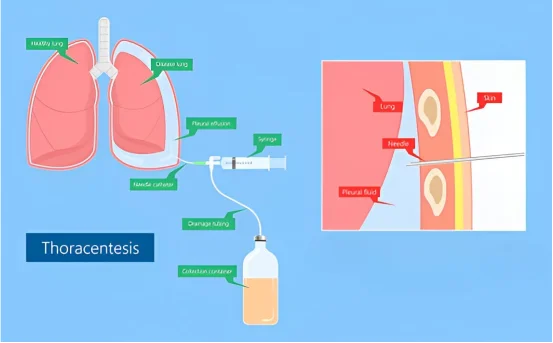Mouth disease, also known as oral disease or oral pathology, refers to a wide range of medical conditions that affect the mouth, gums, lips, tongue, and inner cheeks. These conditions can be mild or severe and may result from infections, autoimmune issues, poor oral hygiene, or underlying systemic diseases. Recognizing and treating mouth diseases early is essential for maintaining good oral and overall health.
According to the World Health Organization (WHO), oral diseases affect nearly 3.5 billion people worldwide. They are among the most common non communicable diseases and are often linked to factors like poor dental hygiene, unhealthy diets, tobacco use, and lack of access to regular dental care. Some mouth diseases may also arise due to underlying health conditions such as diabetes, autoimmune disorders, or weakened immunity. Understanding what mouth disease is, recognizing its signs, and knowing how to prevent it are crucial for maintaining not just oral hygiene but overall wellness.
What is Mouth Disease?
Mouth disease is an umbrella term used to describe various disorders that occur in the oral cavity. These can affect soft tissues like gums, the tongue, and the inner lining of the cheeks, as well as the teeth and bones supporting them. Some mouth diseases are temporary and easily treatable, while others may be chronic or indicative of more serious health problems.
From everyday issues like cavities and gum disease to more complex concerns like oral cancer, mouth diseases vary in severity and health impact. The key to managing them lies in early detection and proper dental care.
Common Types of Mouth Diseases
Although mouth disease includes many conditions, some are more common than others. Here are a few frequently diagnosed types:
- Gingivitis and Periodontitis :- Gingivitis is inflammation of the gums caused by plaque buildup. If left untreated, it can lead to periodontitis, a more serious gum disease that can damage the soft tissue and bone supporting your teeth.
- Dental Caries (Tooth Decay) :- Tooth decay, or cavities, occurs when bacteria in the mouth produce acid that erodes the tooth enamel. Without timely dental intervention, decay can spread, causing pain, infection, and even tooth loss.
- Oral Thrush :- Oral thrush is a fungal infection caused by Candida yeast. It commonly affects babies, elderly individuals, or those with weakened immune systems. It appears as creamy white lesions on the tongue or inner cheeks.
- Canker Sores :- These are small, painful ulcers that form inside the mouth, often on the tongue, inner lips, or cheeks. Unlike cold sores, canker sores are not contagious and usually heal on their own within a week or two.
- Herpes Simplex Virus (Cold Sores) :- Cold sores are fluid-filled blisters caused by the herpes simplex virus (HSV-1). They typically form around the lips and are highly contagious. The virus remains in the body and may reactivate due to stress, illness, or sun exposure.
- Oral Cancer :- Oral cancer can affect the lips, tongue, cheeks, floor of the mouth, and throat. It often starts as a small white or red patch or sore that doesn’t heal. Smoking, excessive alcohol use, and HPV infection are key risk factors.
What Causes Mouth Disease?
Mouth disease can arise due to various factors, depending on the type. Some of the most common causes include :-
-
Poor oral hygiene :- Not brushing or flossing regularly can lead to plaque buildup, cavities, and gum disease.
-
Bacterial and viral infections :- Infections caused by viruses like HSV-1 or bacteria can result in oral lesions or decay.
-
Weakened immune system :- Conditions like HIV/AIDS, cancer treatments, or use of immunosuppressive drugs can make one more prone to infections like oral thrush.
-
Tobacco use :- Smoking or chewing tobacco significantly increases the risk of gum disease, tooth loss, and oral cancer.
-
Dietary habits :- A diet high in sugar and acidic foods can erode enamel and contribute to tooth decay.
-
Dry mouth (Xerostomia) :- Reduced saliva production can make the mouth more prone to infection and decay.
-
Hormonal changes :- Pregnancy, menstruation, or menopause can lead to gum sensitivity or swelling.
-
Systemic diseases :- Conditions such as diabetes and anemia can manifest symptoms in the mouth and worsen existing oral issues.
Symptoms of Mouth Disease
Symptoms vary depending on the type of disease, but some general signs that may indicate a mouth disorder include :-
-
Persistent bad breath
-
Swollen, bleeding, or receding gums
-
Toothache or tooth sensitivity
-
White or red patches in the mouth
-
Sores that don’t heal within two weeks
-
Pain or difficulty while chewing or swallowing
-
A burning sensation in the mouth or tongue
-
Loose teeth without injury
-
Lumps or thickening in the cheek or gum tissue
If you notice any of these symptoms, it’s important to consult a dentist or healthcare professional for a thorough evaluation.
How is Mouth Disease Diagnosed?
Diagnosis of mouth disease typically begins with a clinical oral examination. The dentist may use instruments to inspect the gums, teeth, and inner mouth for signs of disease. Depending on the condition, additional tests may be required, such as :-
-
X-rays :- To detect tooth decay, bone loss, or tumors.
-
Biopsy :- For suspicious lesions that could be cancerous.
-
Saliva tests or cultures :- To identify bacterial or fungal infections.
-
Blood tests :- If systemic diseases like diabetes or HIV are suspected.
Early diagnosis increases the chances of effective treatment and minimizes complications.
Treatment Options for Mouth Disease
Treatment for mouth disease depends on the underlying cause and severity. Common treatment approaches include :-
-
Professional dental cleaning :- To remove plaque and tartar buildup in cases of gingivitis or mild gum disease.
-
Medications :- Antifungal, antiviral, or antibiotic medications may be prescribed for infections.
-
Topical treatments :- Gels or mouth rinses can help manage pain and promote healing for ulcers or sores.
-
Root canal therapy :- For infected or decayed teeth where the pulp is affected.
-
Surgical procedures :- Advanced gum disease or oral cancers may require surgery, such as flap surgery or tumor removal.
-
Lifestyle changes :- Quitting smoking, improving diet, and managing chronic illnesses can help control and prevent recurrence.
Preventing Mouth Disease
Prevention is the most effective way to protect your oral health. Here are a few essential steps to reduce your risk of developing mouth disease :-
-
Brush your teeth twice a day using fluoride toothpaste.
-
Floss daily to remove food particles and plaque between teeth.
-
Visit your dentist regularly (every 6 months) for cleanings and check-ups.
-
Avoid tobacco products and limit alcohol consumption.
-
Maintain a balanced diet rich in fruits, vegetables, and whole grains.
-
Stay hydrated to prevent dry mouth.
-
Replace your toothbrush every 3–4 months or sooner if bristles are frayed.
Good oral hygiene and a healthy lifestyle go a long way in preventing most types of mouth disease.
When to See a Doctor?
While minor issues like canker sores usually resolve on their own, you should see a dentist or physician if :-
-
You have persistent pain, swelling, or bleeding in your mouth.
-
Mouth sores or patches do not heal after two weeks.
-
You experience difficulty in eating, drinking, or speaking.
-
You suspect an infection or abnormal growth.
Prompt medical attention can prevent complications and ensure effective treatment.
Conclusion
Mouth disease is a broad term that covers a range of conditions affecting the mouth and surrounding structures. While some issues are minor, others can lead to serious health consequences if left untreated. Maintaining good oral hygiene, attending regular dental check ups, and being aware of the warning signs are key to preventing and managing mouth diseases.























